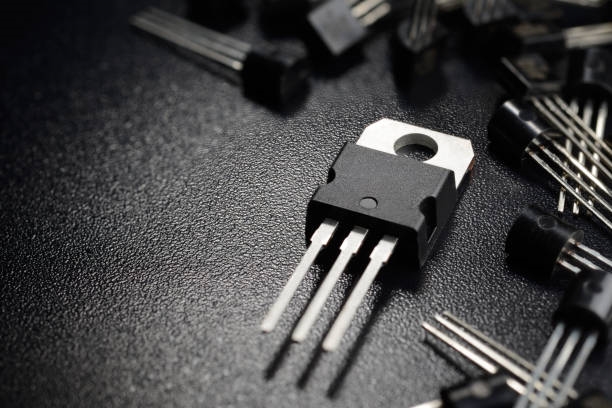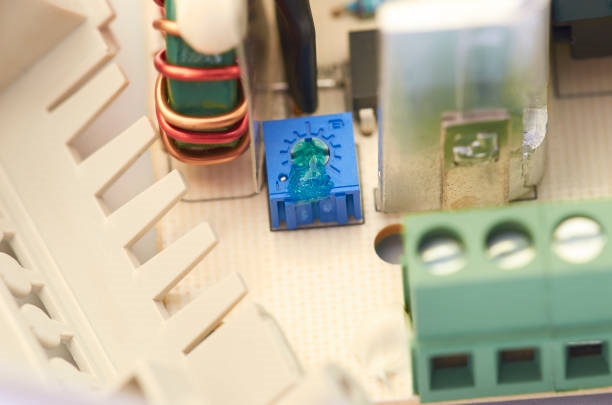Overview
Addressing metal oxide varistor (MOV) aging issues
A metal oxide varistor (MOV) is a typical clamping overvoltage device. In surge protection, the MOV's nonlinear characteristic allows it to clamp the voltage across its terminals to a relatively fixed value when an overvoltage appears, thereby protecting downstream circuitry. Its advantages include high current capacity (100 A to 70 kA): the larger the device, the greater the surge current it can withstand. MOVs are available in many types and have wide applicability. Their well-known disadvantages are: 1) relatively poor nonlinearity (high dynamic resistance); 2) high clamping voltage under large currents; and 3) relatively high leakage current at low voltages, making them prone to aging.
Mechanism of MOV Aging and Failure
MOVs are prone to aging. In many cases, P-N junction overload can cause a short circuit that does not return to the normal state. Under repeated electrical shocks, diode elements inside the MOV can be damaged, and the resistive body progressively linearizes. The varistor voltage decreases while leakage current increases. As the MOV temperature rises, leakage current increases further, creating a thermal runaway loop. If the MOV temperature reaches the ignition point of the encapsulation material, this condition is known as a high-resistance short (around 1 kΩ). Joule heating increases and concentrates at weak points; the weak material melts and a roughly 1 kΩ short hole forms. The power source then forces a large current through the short, producing intense heat and possible fire. Studies show that manufacturing defects accelerate early failure, and repeated moderate surges can also hasten the aging process and cause premature failure.
Parallel Connection with a Ceramic Gas Discharge Tube (GDT)
When an MOV carries sustained large currents its performance degrades. Paralleling an MOV with a ceramic gas discharge tube (GDT) can mitigate this. Before the GDT conducts, the MOV clamps transient overvoltages and absorbs large currents. Once the GDT fires, it shunts part of the surge current away from the MOV, reducing the current stress on the MOV and shortening the duration of large-current flow through the MOV, which helps slow the MOV's performance degradation.
In this parallel arrangement, if the MOV reference voltage Uima is chosen too low, the GDT may not fire during the transient and the MOV would have to dissipate most of the surge energy, which is unfavorable. Therefore, Uima should be set higher than the GDT's DC breakdown voltage. Note that this parallel combination does not solve the GDT's possible follow-on current issue, so it is generally not suitable for AC mains protection.
Series Connection with a Gas Discharge Tube
MOVs have relatively large parasitic capacitance. When used for AC mains protection, this parasitic capacitance can produce a noticeable leakage current under normal operation. For example, an MOV with 2 nF parasitic capacitance installed on a 220 V, 50 Hz AC mains can exhibit a leakage current of about 0.14 mA RMS, which may affect system operation.
Putting the MOV in series with a ceramic gas discharge tube can reduce the total capacitance of the series branch because the GDT has very small parasitic capacitance. In the series branch the GDT acts as a switch: when no transient overvoltage is present, the GDT isolates the MOV from the system so that almost no leakage current flows through the MOV. This allows the MOV reference voltage Uima to be set lower without increasing leakage concerns, which can effectively slow the MOV's performance decline.
During a transient overvoltage, if the GDT can fire quickly, the series branch can provide a lower clamping voltage than a single MOV. In practical applications, determining the optimal parameters for the GDT and MOV in series is often not straightforward.
Practical Considerations for AC Mains Protection
For AC mains protection, the GDT's DC breakdown voltage should be higher than the peak of the system operating voltage, so that the glow discharge region can be extinguished when the mains voltage crosses zero. The MOV must be selected so that it can ensure the extinguishing of the GDT's arc follow-on current. When the GDT is conducting in the arc region, the voltage across it is very low, on the order of 20 V, so the residual voltage of the series branch appears across the MOV. A conservative approach is to assume the system's maximum operating voltage appears across the MOV; in that case the current through the MOV should be less than the GDT's arc follow-on current so that the arc can be extinguished once the transient has passed. In most cases, this critical current can be conservatively taken as about 50 mA.
Summary
Combining MOVs with ceramic gas discharge tubes can reduce residual voltage, increase current handling capability, and extend MOV service life when properly configured. Selection and coordination of MOV and GDT parameters require careful consideration for reliable AC mains protection.
 ALLPCB
ALLPCB






